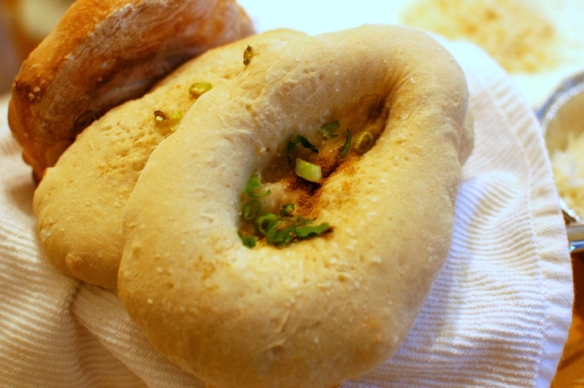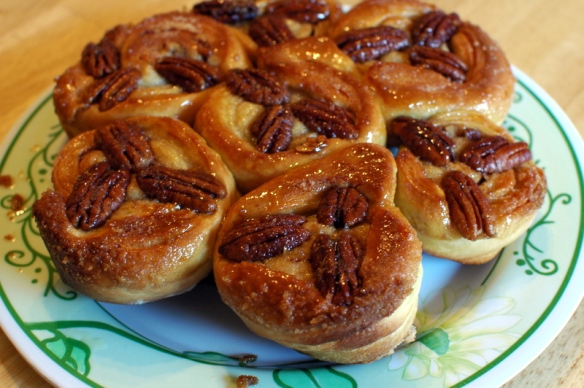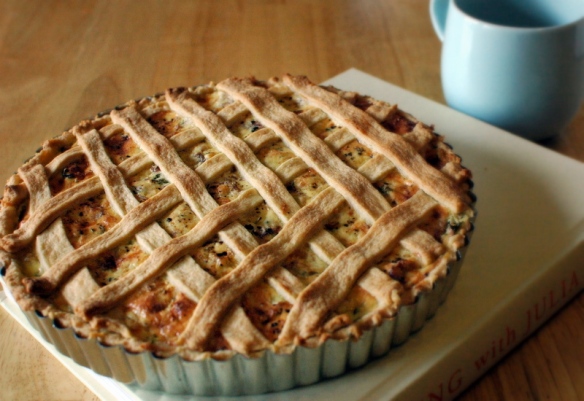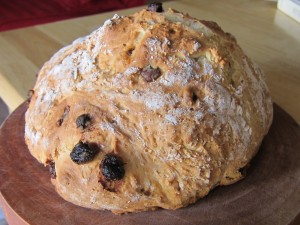Two weeks ago, one of my dear middle school friends visited from France with her husband and adorable 11 month-old baby. We hosted them for dinner on a weeknight so making a meal from scratch seemed too daunting a task, especially with my hectic work schedule these past few weeks. We brainstormed good take-out options and decided to order from our favorite Indian restaurant, Royal Taj, a place that we’ve visited on a couple occasions with Indian friends. Then Dave had another brilliant idea – I would make the naan for the meal. How perfect was it that the next TWD recipe happened to be naan?
This naan is called Oasis Naan in Baking with Julia. I tried to search for the origin of the name but did not come up with anything. I made the dough the night before and let it rise in the fridge. I had a bit of trouble shaping the dough and may not have prickled it enough before baking. As you can see, mine are quite puffy while the ones photographed in the book are much flatter. They were still very tasty but likely more hearty than intended (although it seems that for many other TWD bloggers these came out thicker than in the book as well) and made for a very fine vessel to scoop up all the curries we had that night.
Oasis Naan
You can find the recipe at Maggie’s blog – Always Add More Butter – or at Phyl’s blog – Of Cabbages & King Cakes. The recipe calls for 5 cups bread flour and for me it came out to be exactly 2 pounds.
Royal Taj (link)
8874 McGaw Road
Columbia, MD 21045
(410) 381-1111






